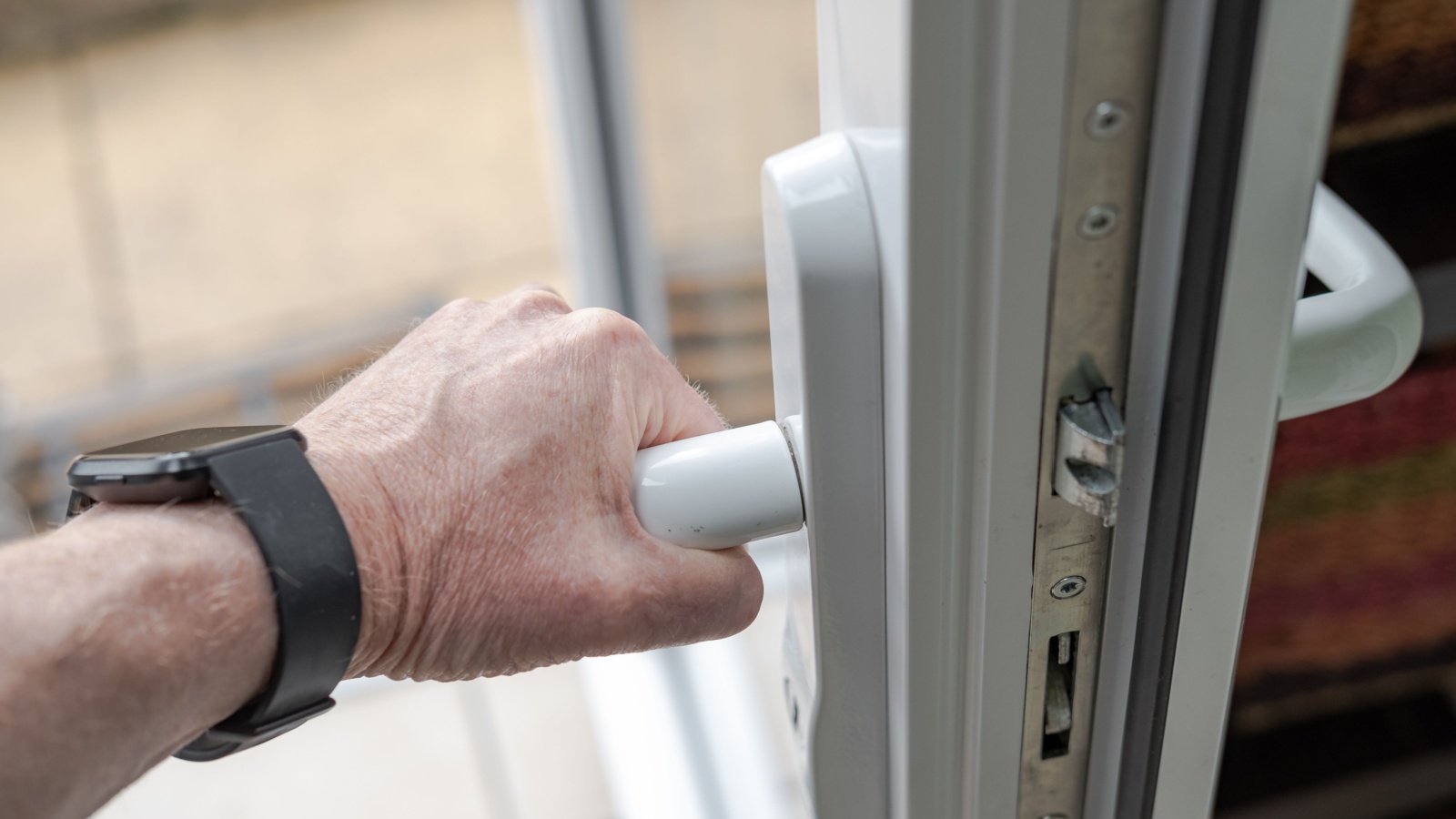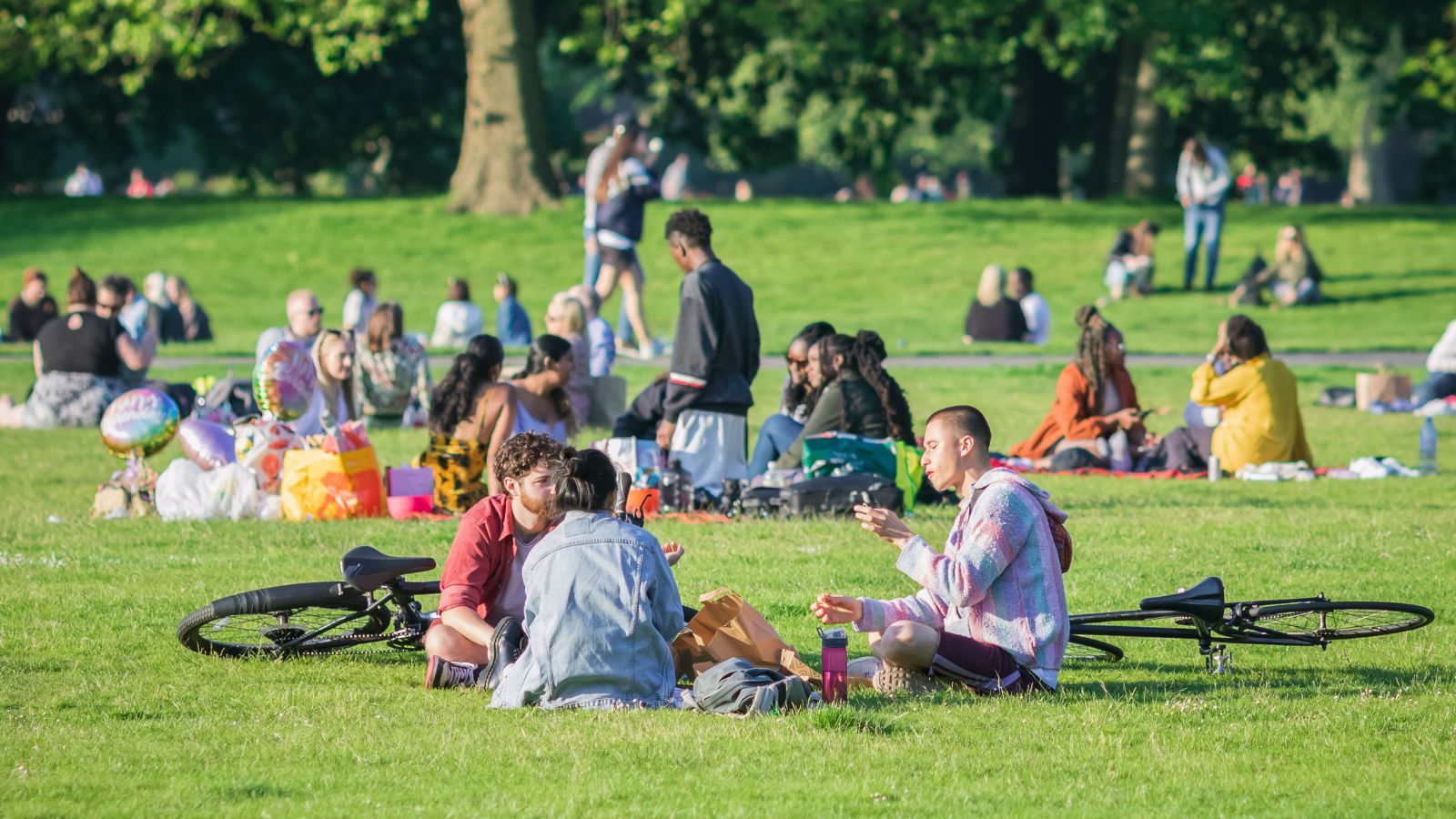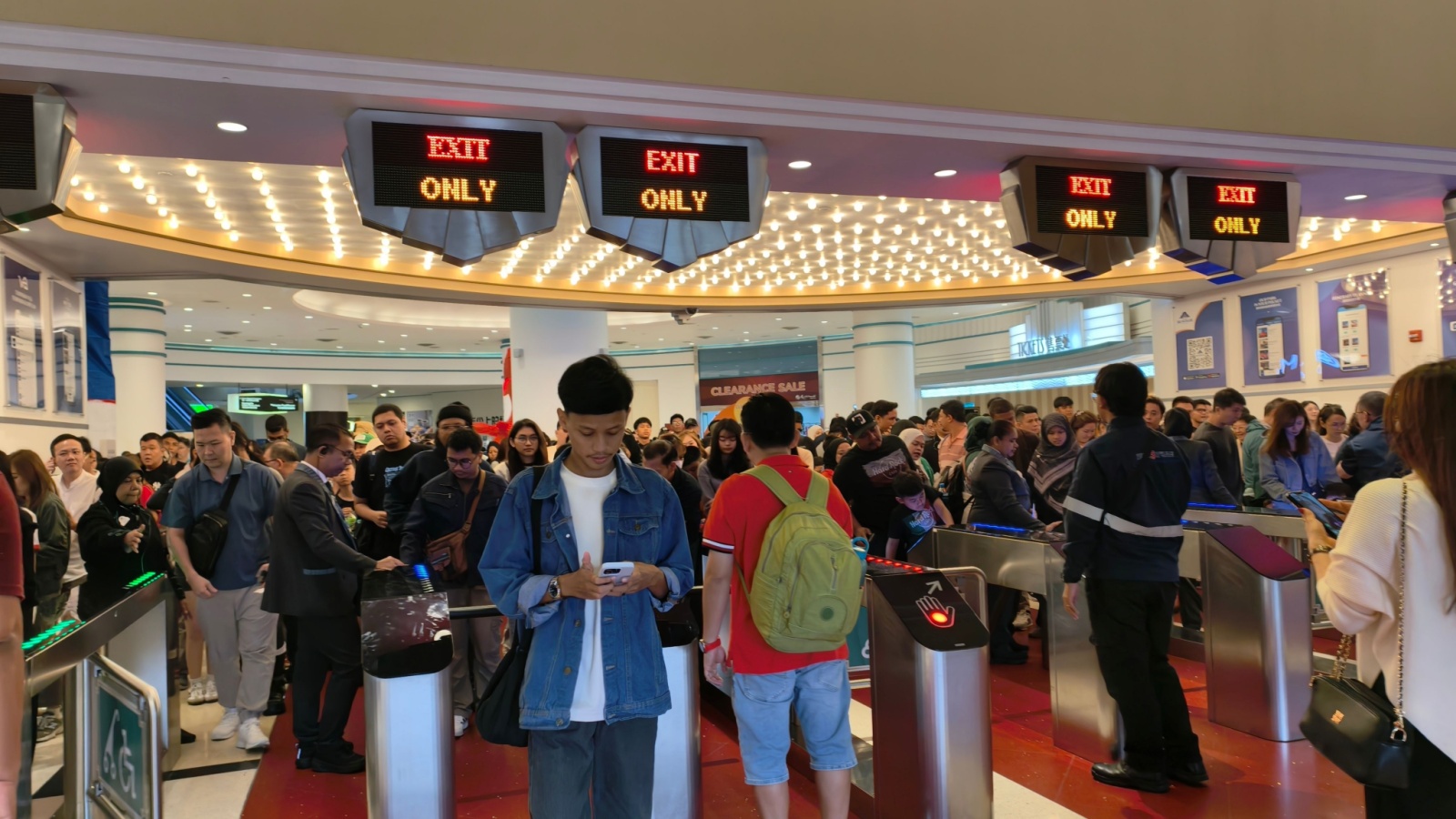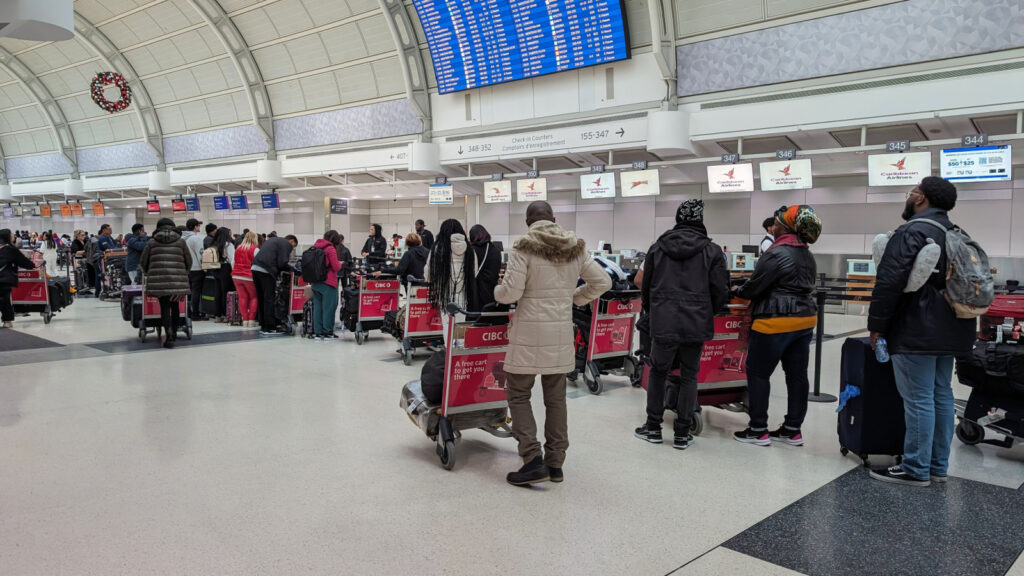Canada’s social norms may appear relaxed, but many everyday interactions follow subtle, unspoken etiquette rules that locals understand instinctively. These expectations shape how people communicate, share space, and behave in public—often in ways visitors don’t immediately notice. Here are 19 “only here” etiquette rules that will save you from embarrassment.
Saying Sorry Even When You’re Not at Fault

Apologizing is a core element of Canadian social behaviour, and people often say “sorry” simply to acknowledge a situation rather than accept blame. It signals awareness, courtesy, and respect for shared space. In crowded places, before asking a question, or when passing someone, “sorry” functions almost like a softening phrase. Not using it can come across as abrupt. Visitors sometimes misinterpret it as an admission of guilt, but Canadians understand it as a social lubricant. Mastering this reflex helps you avoid appearing rude or detached, especially in close public settings where politeness is quietly expected.
Holding the Door for Anyone Behind You—Even from a Distance

Canadians take door-holding very seriously. If someone is close enough that the door might swing shut in their face, you’re expected to hold it open, regardless of age, status, or whether you know them. Failing to do so is considered impolite. This habit can lead to slightly awkward moments where both people hurry toward the doorway to avoid keeping the other waiting. It’s a small gesture that reflects broader Canadian values around shared courtesy. Visitors often find the timing tricky, but participating in door etiquette prevents you from appearing unaware of local expectations.
Standing in a Quiet, Respectful Line—Always

Lining up is more than a practical system in Canada; it’s a social rule. People expect orderly queues in stores, bus stops, festivals, and even casual situations like food trucks or sample stations. Cutting ahead, crowding forward, or skipping the line is considered highly disrespectful. Canadians typically leave personal space between individuals and rarely encroach. The unspoken expectation is patience, silence, and fairness. Even when the line is long or moving slowly, complaining loudly is discouraged. Understanding this norm ensures you fit smoothly into public routines and avoid unnecessary tension.
Removing Shoes When Entering Someone’s Home

In Canada, entering a home with shoes on is generally unacceptable unless explicitly instructed otherwise. Most households, regardless of background or region, expect visitors to remove their footwear at the door. This practice keeps homes clean during long winters when snow, salt, and dirt accumulate. Hosts often provide a place to store shoes or slippers to wear inside. Forgetting this rule can feel intrusive or disrespectful. Removing shoes immediately after stepping inside is the simplest way to follow local expectations and avoid creating an awkward first impression.
Waiting Your Full Turn at Four-Way Stops

Canadian driving etiquette includes a strong adherence to orderly behaviour at four-way stops. Drivers are expected to proceed strictly in the order they arrive, making eye contact or giving small nods to confirm turns. Cutting ahead or rushing through disrupts the expected flow and can appear aggressive. Even when no one is around, most drivers still perform a full pause. This predictable rhythm is part of Canada’s broader preference for calm, structured behaviour in public settings. Following it prevents confusion and demonstrates respect for shared road safety expectations.
Giving Wide Space to Wildlife—Always

Canada’s vast landscapes mean wildlife encounters are common, and locals follow strict etiquette around giving animals significant space. Approaching, feeding, or crowding wildlife—whether deer, elk, bears, or geese—is considered unsafe and disrespectful. Canadians typically keep their distance, use long-range photography, and remain quiet around animals. Not following this rule can lead to dangerous situations and is viewed as irresponsible. Wildlife etiquette isn’t just about safety; it reflects cultural respect for nature. Understanding this expectation helps visitors blend into outdoor settings without appearing careless or uninformed.
Keeping Voices Low in Public Spaces

Canadians generally prefer calm, moderate speaking volumes in public areas such as transit, cafes, waiting rooms, and parks. Loud conversations, speakerphone calls, or disruptive noise are discouraged. This social expectation reflects a cultural emphasis on shared comfort. People typically avoid drawing attention to themselves through noise, and visitors who speak loudly can unintentionally stand out. Lowering your voice to match the environment helps you blend in and avoids creating discomfort. This norm is especially important in confined spaces like buses or elevators, where sound carries quickly.
Acknowledging Others on Hiking Trails

Outdoor etiquette includes greeting or nodding to people encountered on trails. Whether hiking, biking, or walking, acknowledging others with a quick “hi” or nod is considered polite. This tradition fosters a sense of safety and community in outdoor settings. Passing someone silently can come across as unfriendly or unusual. The interaction is brief and doesn’t require conversation—just a simple recognition of shared space. Understanding this rule helps you integrate smoothly into Canada’s outdoor culture, where friendliness and awareness are valued on every trail.
Leaving Plenty of Personal Space in Lineups

Canadian personal-space norms are notably generous, especially in queues. Standing too close to someone is considered intrusive. Most people leave a comfortable gap between individuals, even in busy settings. This unwritten rule applies in grocery stores, transit stops, cafes, and ticket lines. Encroaching on someone’s space can create immediate discomfort. Respecting this distance shows awareness of social boundaries. Combined with Canada’s general preference for quiet and order, maintaining space is essential for avoiding awkward moments in everyday interactions.
Letting Others Exit Before Entering

Whether boarding buses, trains, elevators, or small shops, Canadians consistently allow people to exit before entering. This behaviour prevents congestion and reflects broader social values around order and consideration. Pushing forward or squeezing in before others have left is seen as impatient or rude. In public transit especially, this rule keeps movement smooth and predictable. Waiting a moment signals awareness of shared space and prevents bottlenecks. Following this simple practice helps you navigate Canadian public areas without drawing negative attention.
Always Moving to the Right on Sidewalks and Trails

In Canada, people expect others to move to the right-hand side when walking on sidewalks, trails, or public corridors. This convention keeps foot traffic flowing smoothly and prevents awkward collisions. Walking on the left or drifting unpredictably can frustrate others and disrupt the natural rhythm of pedestrian movement. Canadians typically shift right automatically, especially in crowded areas or narrow pathways. This practice also applies when stopping—people step aside rather than halting abruptly in the middle. Understanding this subtle rule helps prevent unnecessary bumps and ensures you don’t appear unaware of local walking norms.
Respecting “Quiet Zones” Without Being Told

Many public spaces in Canada informally operate as quiet zones even when not labelled. Libraries, transit cars, waiting rooms, and medical offices are expected to remain low-noise environments. Speaking loudly on the phone or playing videos without headphones is considered disruptive. Most Canadians instinctively recognize when a space calls for silence and adjust their behaviour accordingly. Visitors who ignore these expectations stand out quickly. Respecting quiet zones shows awareness of shared comfort and reflects sensitivity to those who rely on peaceful environments. It’s an easy way to fit into daily Canadian routines without drawing negative attention.
Avoiding Cutting Across People’s Conversations

Interrupting or inserting yourself into conversations—especially among strangers—is considered impolite in Canada. People value personal boundaries and tend to interact cautiously until invited. Even in public settings like shops or community events, Canadians wait for an appropriate moment before speaking. Interjecting abruptly can be seen as overbearing or intrusive. This expectation applies to casual chats, lineups, and group interactions. Allowing others to finish their thoughts demonstrates politeness and respect. Understanding this rule helps you avoid unintentionally dominating discussions or appearing impatient.
Using Please and Thank You More Often Than Expected

Politeness markers like “please” and “thank you” are fundamental in Canadian communication. These phrases appear in nearly every interaction—from ordering food to receiving directions or asking simple questions. Not using them can make exchanges feel abrupt or dismissive. Canadians often thank people multiple times within a single interaction, including service workers, transit drivers, and even strangers holding doors. This habit reflects a cultural emphasis on respect and gratitude. Incorporating these phrases consistently ensures smoother communication and prevents misunderstandings. For visitors, adopting this pattern quickly signals courtesy and awareness of local expectations.
Waiting for Everyone to Be Served Before Starting a Meal

In social or family settings, Canadians typically wait until everyone at the table has been served before beginning to eat. Starting early is considered impolite unless the host gives explicit permission. This etiquette applies in restaurants, homes, and formal gatherings. It reflects respect for shared experience rather than individual convenience. Canadians value inclusivity at the table, and waiting ensures everyone participates together. If you’re unsure, a quick glance at the host or others usually provides guidance. Observing this custom helps you avoid appearing impatient or unaware of group dining norms.
Avoiding Overly Personal Questions Early On

Canadians generally avoid asking personal questions until a relationship is more established. Topics such as income, family matters, political views, or relationship history are considered private. Bringing them up too early can feel intrusive. Instead, Canadians favour light, neutral conversation in early interactions, such as hobbies, weather, travel, or shared interests. This approach helps maintain comfort and prevents social pressure. Visitors from cultures where personal questions are normal may be surprised by this boundary, but respecting it helps build trust gradually. Understanding this norm ensures smoother interactions and reduces the risk of unintentionally causing discomfort.
Respecting People’s Place in Public Seating

In Canada, public seating etiquette prioritizes giving others personal space whenever possible. Sitting immediately beside a stranger when other seats are available is usually avoided. Whether on buses, in waiting areas, or in parks, Canadians choose seats that leave a comfortable distance until the space fills up. Sitting too close too soon can seem odd or intrusive. This preference aligns with broader social values around personal boundaries. When a space becomes crowded, people adjust accordingly, but the initial expectation remains clear.
Holding Back on Public Displays of Emotion

Canadian etiquette tends to favour emotional moderation in public. Large displays of anger, frustration, excitement, or disagreement—especially among strangers—can make others uncomfortable. Canadians prefer calm communication, even when addressing issues or expressing strong feelings. Keeping emotions measured demonstrates respect for shared spaces and social harmony. Visitors who are more expressive may not realize when their behaviour stands out. Adopting a steady tone and avoiding dramatic reactions helps align with local expectations and ensures public interactions remain smooth and tension-free.
Thanking Service Workers at Every Step

Showing appreciation to service workers is deeply ingrained in Canadian etiquette. People commonly thank cashiers, baristas, servers, drivers, delivery workers, and customer service staff, often more than once within the same interaction. This behaviour reflects national values around courtesy and respect for labour. Not expressing gratitude may seem abrupt or dismissive, even if unintentional. Remembering to say thank you—with eye contact or a polite tone—helps you maintain positive interactions and demonstrates awareness of local norms.
21 Products Canadians Should Stockpile Before Tariffs Hit

If trade tensions escalate between Canada and the U.S., everyday essentials can suddenly disappear or skyrocket in price. Products like pantry basics and tech must-haves that depend on are deeply tied to cross-border supply chains and are likely to face various kinds of disruptions
21 Products Canadians Should Stockpile Before Tariffs Hit
